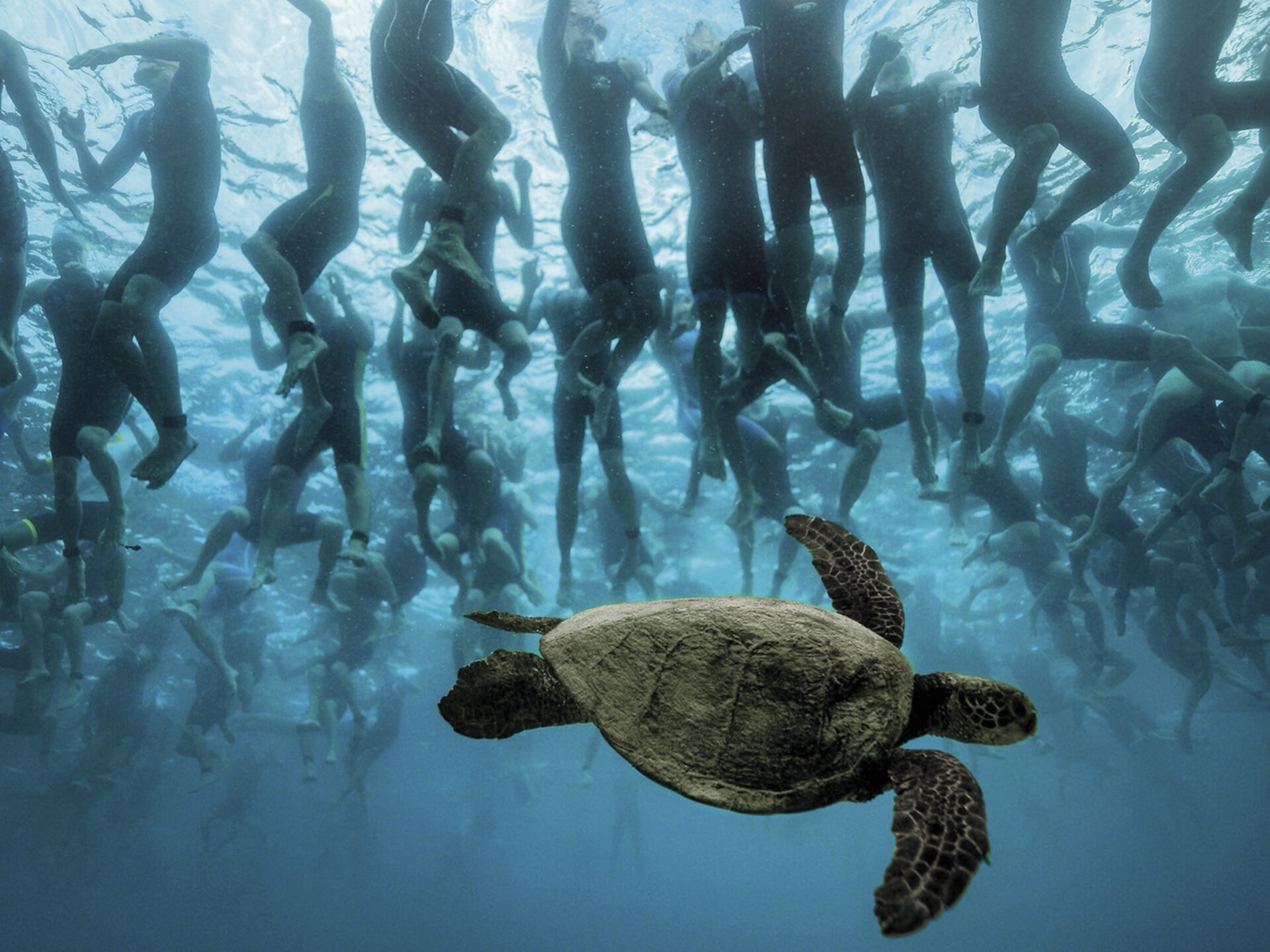May 12, 2021
Is This What the Future of Triathlon Looks Like?

This article was originally published in Populous Magazine, our biannual publication featuring news and trends from the worlds of sport, entertainment, and major public events. Find out more, and sign up to receive a free copy, here.
Despite enormous popularity among amateurs, for decades triathlon has survived on paltry prize money and limited TV exposure. A new sports organisation wants to change all that, as Andy Fry discovers.
“Our sport is under-commercialised and needs to tell a more compelling story.” Sam Renouf, head of the Professional Triathletes Organisation (PTO), wants triathlon to overtake rival sports. Among young professionals, he even sees endurance sport, with triathlon leading the charge, supplanting more traditional activities such as golf.
“Triathlon is also one of the most gender-balanced sports you’ll find,” he tells Populous magazine. “Men and women participate in the same competitions for the same prizes.”
But if it’s to succeed, this swim-bike-run sport must start flexing its commercial muscles. “Brands spent around US$1.65 billion sponsoring golf in 2019, whereas triathlon generated less than 10 per cent of that,” Renouf says with regret.
"By giving the sport’s leading athletes self-determination, we can create the conditions to unlock its potential value."
Perhaps the PTO can help. Formed in 2019 with financial backing from American investment company Crankstart Investments, the organisation is a not-for-profit entity whose membership consists entirely of professional triathletes. Renouf compares it to the PGA and LGPA in golf, and the ATP and WTA in tennis. “It is a natural evolution for a young sport like triathlon,” he says of the London-based body. “By giving the sport’s leading athletes self-determination, we can create the conditions to unlock its potential value.”
He hopes to tie together the various strands of triathlon by uniting the sport’s top talent under one roof. “Triathlon has around 500,000 active participants and two million enthusiastic fans. But it doesn’t have a strong TV product. The [long-distance triathlon] Ironman series has done a great job, but its business model is more about selling tickets to amateurs. The professional element is an afterthought and that makes it hard to establish an international franchise that appeals to broadcasters.”
By contrast, the PTO’s plan is to run five elite events a year – including one team-based event styled on golf’s Ryder Cup. Races will be 100kms in all (2km swim, 80km bike, 18km run), lasting three to four hours, which suits TV schedules better than Ironman, where even the top finishers require around eight hours. “TV will showcase their ability and social media can amplify their stories,” he adds.
Inevitably, Covid-19 has slowed the planned roll-out of the PTO’s annual calendar of events. But Renouf points to their 2020 Championship at Daytona International Speedway, in Florida, as proof of concept. This was a three-day festival in December that, he says, enjoyed media coverage in 126 countries.
The next big meet for the PTO will be its team event, the Collins Cup. Currently scheduled for May 2021 (Covid-19 permitting), it will see three teams (US, Europe and International) competing at the X-bionic Sphere, a sports complex in Samorin, Slovakia.
As for the full season, the PTO is hoping to start in 2022. It compares its planned individual events to tennis’s Grand Slams. “We’re exploring sites in the US, Europe and Asia,” Renouf says. “We see an opportunity for a few select cities or regions to become long-term partners.”
The world’s top professionals will be attracted by the larger-than-usual prize fund on offer. A recent New York Times article suggested the current earning potential for top triathletes is “relatively lousy” – with many generating between $80,000 and $160,000 a year. The PTO, however, is offering prize money of $1 million to $2 million per event, as well as a $2 million end-of-season pot, shared out according to rankings.
Assuming the series grows as Renouf anticipates, the purse will be boosted by live rights and sponsorship deals. At the same time, improved profile for the PTO’s athletes could result in more lucrative endorsement contracts. Not to be overlooked either is the PTO’s decision to pay out $2.5 million in Covid-19 relief payments to last year’s 200 top-ranked pros – evidence of the organisation’s commitment.
"grass roots is absolutely part of our blueprint..."
But how should the wider sport of triathlon view the prospect of increased wages for its elite athletes? With the PTO’s main investor Crankstart Investments entitled to 50 per cent of all the organisation’s profits, will this financial largesse ever cascade down to the amateur level? Renouf insists “grass roots is absolutely part of our blueprint.” “Our members want to contribute to the growth of the sport and the triathlon community,” he promises.
The other major concern is whether triathlon’s long-standing governing bodies will be happy about a new organisation gate-crashing the party. As well as Ironman, the PTO needs to slot in alongside the world governing body World Triathlon, national federations and a commercial series called Super League Triathlon. As far as the federations are concerned, Renouf says there is goodwill on both sides, with the PTO “having no intention of getting into the governance of the sport”. As for Super League, he views them as complementary since they focus on short distances.
Ultimately, the PTO’s success will be measured by the popularity of its events on TV and social media. Right now, it has 58,000 Instagram followers, 9,250 YouTube subscribers, and 21,000 and 6,000 on Facebook and Twitter respectively.These numbers need to grow.
Lorem ipsum dolor sit amet consectetur, adipisicing elit. Non facere corporis et expedita sit nam amet aut necessitatibus at dolore enim quis impedit eius libero, harum tempore laboriosam dolor cumque.
Lorem, ipsum dolor sit amet consectetur adipisicing elit. Illo temporibus vero veritatis eveniet, placeat dolorem sunt at provident tenetur omnis, dicta exercitationem. Expedita quod aspernatur molestias eum? Totam, incidunt quos.